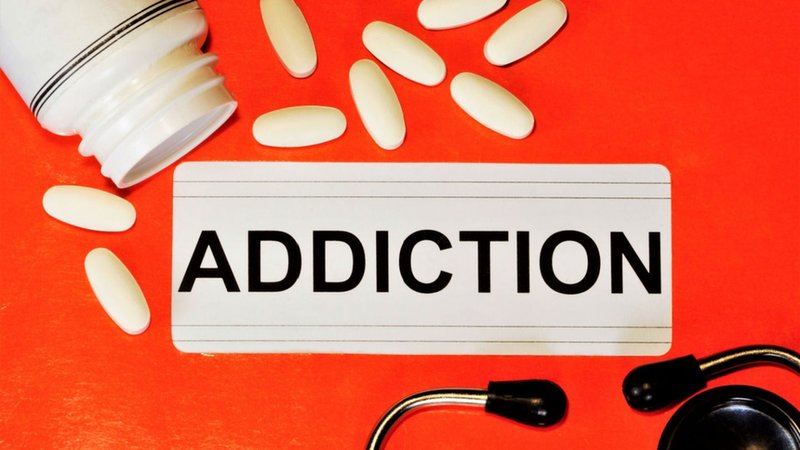Comment
Digital health tech: a solution to substance use disorders?
Substance use disorders leave people with long-term negative mental and physical health implications and can lead to death. By GlobalData Thematic Intelligence.

Credit: Shutterstock
Healthcare providers are under pressure to address the growing issue of substance use disorders. Spurred on by factors such as the Covid-19 pandemic, geopolitical tensions, and a fluctuating macroeconomic environment, GlobalData forecasts that by 2028, total prevalent cases in the 16 major pharmaceutical markets (16MM*) for opioid addiction will surpass eight million; cases of alcohol addiction will reach 770 million; and cases of smoking cessation will surpass 360 million.
Substance use disorders leave people with long-term negative mental and physical health implications and can lead to death. A recent study in the Journal of the American Medical Association found that between 2015 and 2019 as high as one in eight deaths in the US could be attributable to excessive alcohol consumption.
Healthcare is turning towards tech to develop effective therapies for substance use disorders
While there are several well-established pharmaceutical treatment options available for smoking cessation, and for opioid and alcohol use disorders, there is still a high demand for more effective therapies. According to GlobalData’s Medical Device Pipeline Analytics, there are 61 products in development for treating substance abuse disorders classed as healthcare IT.
Devices treat a range of indications from opioid use disorder and cannabis craving to neonatal opioid withdrawal syndrome (NOWS) and nicotine addiction. Of the 37 in clinical trials and 24 in early development, GlobalData forecasts that 27 will receive regulatory approval by 2025.
Using nanomaterials to deliver drugs to treat TB and infectious lung diseases can provide numerous advantages over traditional drug delivery methods.
While NPs have been developed for TB over the past decade, the therapeutic systems have become prominent using diagnostic and therapeutic methods (theranostic). Theranostic approaches to TB management were designed to conduct nuclear imaging, optical imaging, ultrasound, imaging with magnetic resonance, and computed tomography.
Problems with resistance to conventional TB drugs mean therapeutic methods require high doses of numerous medications over a longer time. Issues with the practical capabilities of traditional drugs for TB also exist. Solubility, stability, and penetration impact the drugs’ effectiveness. Traditional drugs may also create resistance over time, a relapse, and extend to other body parts, leading to secondary TB.
Wearable tech helps to track symptoms and improve disease management
There are at least 17 wearable medical devices in product pipelines with the sole purpose of treating and monitoring substance use disorders according to GlobalData’s Medical Device Pipeline Analytics. For example, Spark Biomedical’s Roo Therapy System is a wearable neurostimulation device designed to treat NOWS.
The Roo Therapy System delivers electrical pulses in and around the ear through a patch and is monitored via an app so that healthcare practitioners can manage treatment outcomes remotely. The device received Breakthrough Device Designation from the US Food and Drug Administration (FDA) in December 2020 as no standard of care for the condition existed. GlobalData expects the device to receive full regulatory approval in July 2023.
Mobile health (mHealth) apps can deliver evidence based therapeutic interventions
While most mHealth apps are used to collect patient data and track disease progression, in some cases they can belong within digital therapeutics (DTx) by delivering evidence-based therapeutic interventions. There are at least 22 mHealth apps in product pipelines designed for patients with substance use disorders that fill this latter category and will require regulatory approval.
For example, Continuous Precision Medicine’s CPMRx is a mobile app used to monitor the use of pain medication by women following caesarean surgery. Expected to receive FDA approval by February 2026, the app tracks usage and provides personalised schedules to help reduce use, increase compliance, and reduce pain levels.
Virtual reality (VR) and augmented reality (AR) technologies are increasingly used by healthcare
VR and AR are being increasingly used by the healthcare industry to deliver novel interventions. As an emerging treatment option, there are four VR or AR devices in medical device pipelines specifically designed for the treatment of substance use disorders. BehaVR’s Mindfulness-Oriented Recovery Enhancement Therapy delivered over Virtual Reality (MORE-VR) is a digital health tool to help patients with opioid use disorder.
Cognitive behavioural therapy (CBT) techniques are delivered via VR headsets for patients receiving buprenorphine in an opioid treatment program. Following BehaVR’s merger with OxfordVR and its subsequent Series B funding round, the tool could provide a novel therapeutic in treating opioid use disorder.
The future of digital health technologies and substance use disorders
Digital health technologies will provide further opportunities to improve disease treatment and management for the growing population of patients with substance use disorders. While the current focus lies in the areas of mHealth apps, digital therapeutics (DTx), and IoT, future treatment options could surface from emerging technologies such as the metaverse and robotics.
*16MM = France, Germany, Italy, Spain, Japan, Australia, Brazil, Canada, China, India, Mexico, Russia, South Africa, South Korea, the US, and the UK